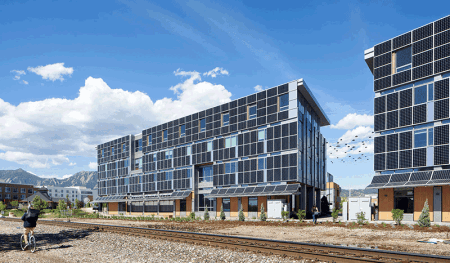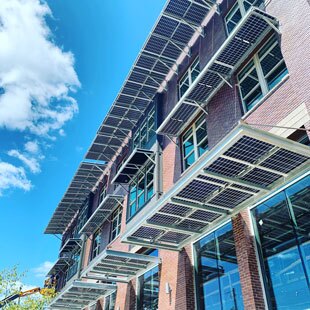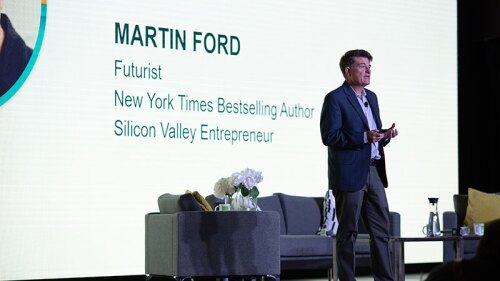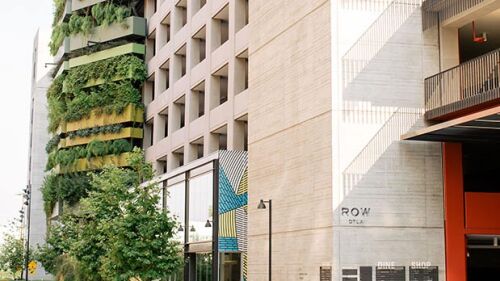Participating in ULI enables them to work on an important issue while growing professionally.
For young people in the real estate industry, getting ahead professionally is important. But looming over their personal aspirations is an issue that they’re deeply concerned about—the consequences of climate change, which if unmitigated threatens to radically alter both their lives and the urban landscape in which they will work.
That is one of the appeals of becoming involved in ULI, which not only enables them to learn from industry leaders and technical experts and gain skills and knowledge to advance their careers but also provides an opportunity to be a part of the Institute’s concerted effort to decarbonize the built environment.
One of ULI’s three mission priorities—achieving net zero carbon emissions operationally in the real estate sector by 2050—resonates strongly with these three members who qualify for ULI’s under-35 Young Leaders Group.
“Some of the key drivers behind my early involvement were both the networking and the information platform that ULI has created,” explains Kendall Cooper, a senior analyst in real estate investing at global investment banking, securities, and investment management firm Goldman Sachs in New York City. “It’s been beneficial getting to learn from other young leaders in the industry that come from different backgrounds. Being a part of an organization with a dynamic member base also allows you access to industry insights, connections, and experiences that otherwise may take a bit longer in your career to realize.”
In an email, Cooper notes that real estate environmental, social, and governance (ESG) requires understanding complex issues such as carbon accounting, as well as diversity, equity, and inclusion (DEI), and community engagement, in addition to core knowledge in real estate investing and the financial services industry. “Networks such as ULI help in ramping up to speed faster,” he says.
The Towson University graduate, who previously worked as an assistant property manager in a 302-unit luxury multifamily community, sees net zero as an economic as well as an environmental issue.
“There’s definitely a business case to be built around decarbonization—it doesn’t need to just be driven by impact metrics,” he says. “The added aspect is the overlap between decarbonization and affordability. By reducing energy use and using on-site renewables, energy costs decrease for residents, which is particularly impactful for affordable housing.” He envisions a future in which “net zero buildings and design is becoming more prevalent in the future as regional regulations materialize, and as demand grows within the market.”
“Young leaders can play a part in this transition by staying up to date on the latest technology, bringing fresh perspectives, or by connecting disparate parts of the industry,” Cooper says.
Preparing for Change
Another ULI member who is strongly committed to Net Zero is Brittany Ryan, head of sustainability for Nuveen, an investment subsidiary of retirement fund giant TIAA, and leader of Nuveen’s ESG program for the Americas portfolio.
“We need to remind ourselves of what the ultimate objective is here, to mitigate and prepare for catastrophic climate change, the greatest most convoluted threat to humanity,” Ryan explains in an email. “This is not just from an environmental and health perspective, but from a global economic perspective, as well. And to do that, we need to reduce emissions.”
Ryan, who participated in a ULI panel in January on future-proofing buildings to prepare for climate risks, talked about her involvement in ULI’s Greenprint Center for Building Performance.
“I’ve been participating in ULI Greenprint for several years now and find the group to be incredibly useful,” she says. “The ULI Greenprint team is laser-focused on providing resources and forums for the sustainability/ESG real estate industry and eagerly flexes and flows with its evolving needs. I’ve spoken on panels, attended Fall Meeting, a product council meeting, topic-specific working groups, informal mixers, and the latest—the ULI, CRREM (Carbon Risk Real Estate Monitor), Berkeley Lab working group for CRREM pathways for the U.S. and Canada.”
Ryan, who holds a master’s degree in public policy and environmental policy from the University of Maryland, says her involvement in ULI has helped her career in sustainability.
“There is no manual for ESG/sustainability in real estate so having a reliable peer group to lean on keeps me sane,” she says. “I feel supported and validated connecting with the Greenprint group, deliberating the latest challenges, solutions, technologies, etc. with the leaders of the industry. The ESG world has always been communal in nature, where we all operate as a unit moving in the same direction, and ULI Greenprint is an effective forum to keep that culture and momentum alive. I mentioned several elements of my involvement, and these events and activities never fail to leave me with new information and tools to better execute my role at Nuveen.”
Ryan notes that the ESG field “is broad, deep, and complicated, making it easy to get caught up in the netting of wicked problems, but reducing emissions is the top priority. So, coalescing the industry around decarbonization and net zero efforts is absolutely paramount to achieving—or coming anywhere close to achieving—that objective.”
Though the climate issue is complex, “it is equally crucial to keep the approach and messaging as simple as possible,” Ryan says. “The disparity across reporting frameworks, disclosure regulation, investor expectations, methodologies, nomenclature, policy, etc., is undoubtedly a risk to progress. Groups like ULI Greenprint serve as that forum to enable alignment and cross-pollination among industry players to test the best possible solutions out there and progress.”
Engaging ULI Members
Yet another young leader who’s strongly committed to net zero is Morgan Maloney, manager of ULI’s Randall Lewis Center for Sustainability in Real Estate. Maloney, who holds a master’s degree in financial economics from Texas A&M University, long has been interested in the climate issue. But it wasn’t until she worked on ULI’s learning team and helped to put together a class on net zero that she saw the opportunity to have an impact.
“To me, it’s so important,” Maloney explains in an interview. When an opportunity arose to move over to the research center where I work now, I just grasped it.”
She credits the ULI Greenprint Center for bringing members into the effort to reduce carbon and mitigate climate change. “We’ve tried to engage a lot of members who are thinking, ‘I’m supposed to be doing this, but I have no idea how to,’” she explains. Maloney has also helped author case studies on how developers can make net zero work, including Boulder Commons and the NetWork Building by Entegrity Energy Partners located in Fayetteville, Arkansas.
Maloney notes that thinking about carbon reduction in the industry is evolving, thanks in part to ULI efforts. She has an increasing focus on embodied carbon—emissions released during the lifecycle of building materials, from the extraction of raw ingredients to the eventual disposal. “We want to be using lower carbon materials,” she explains. There’s also a growing awareness of the need to retrofit older buildings and “greening them,” so that they don’t become stranded assets that will be no longer economically viable because of cities’ imposition of limits on carbon emissions.
Maloney noted that other colleagues at ULI are joining in Net Zero Buildings Week, June 12-16, in which participants will utilize social media platforms to spread messages about decarbonization. It’s part of an educational effort that she hopes will pay off, a decade down the road.
“I think that success, especially on the ULI side, will be broad education and understanding,” Maloney says. “If every member who comes to us then is already on their own path to Net Zero, even if it’s not some official commitment that they’ve made, I think that would be success.”
More: ULI Greenprint Goals | ULI Foundation: Accelerating Net Zero





